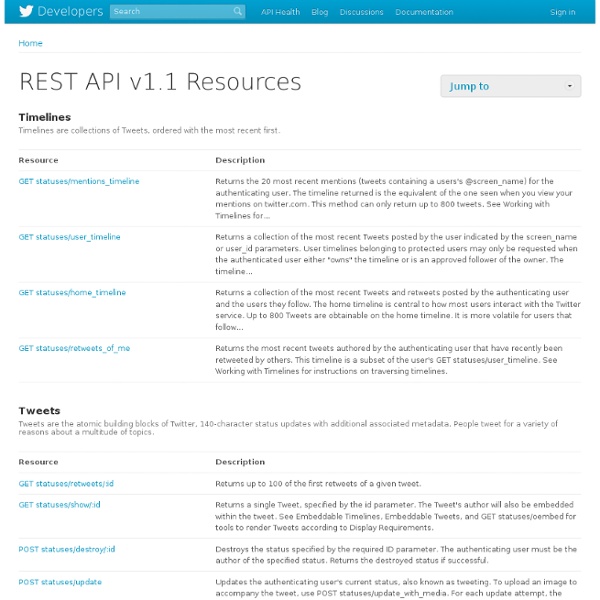REST API v1.1 Resources

7. Input and Output — Python v2.7.5 documentation
There are several ways to present the output of a program; data can be printed in a human-readable form, or written to a file for future use. This chapter will discuss some of the possibilities. 7.1. So far we’ve encountered two ways of writing values: expression statements and the print statement. Often you’ll want more control over the formatting of your output than simply printing space-separated values. The string module contains a Template class which offers yet another way to substitute values into strings. One question remains, of course: how do you convert values to strings? The str() function is meant to return representations of values which are fairly human-readable, while repr() is meant to generate representations which can be read by the interpreter (or will force a SyntaxError if there is no equivalent syntax). Some examples: Here are two ways to write a table of squares and cubes: There is another method, str.zfill(), which pads a numeric string on the left with zeros. '!
Behat — BDD for PHP
Error Codes & Responses
Updated on Tue, 2014-04-15 17:12 HTTP Status Codes The Twitter API attempts to return appropriate HTTP status codes for every request. It is possible to suppress response codes for the REST API. Error Messages When the Twitter API returns error messages, it does so in your requested format. Error Codes In addition to descriptive error text, error messages contain machine-parseable codes. If you see an error response which is not listed in the above table, then fall back to the HTTP status code in order to determine the best way to address the error.
jokkedk/webgrind
Related:
Related:



